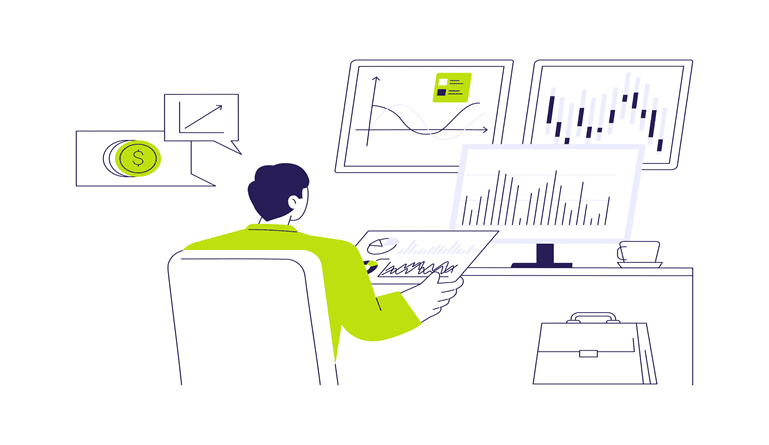Accounts receivables are very important for any company because they can help them manage their cash flow and ensure that they are not running out of money too soon. Find out the definition, some examples, the process that goes behind it, and why do accounts receivables play an imperative role for a business and organization. Stay tuned till the end to find out all the details.
What is Accounts Receivables?
Accounts receivable is a term used in accounting to describe the amount of money owed by customers to a company.
A company has accounts receivable when it sells goods or services to its customers, and the customer fails to pay for these goods or services within the agreed time frame. The company then records this amount as an asset on its balance sheet and pays for it later with cash or other assets.
Examples of Accounts Receivables
- Money received from a sale but not yet paid
- Interest on debt
- Money received from an insurance policy
- Money received from a loan that is being repaid with interest
What is the Process of Accounts Receivables?
It is the process of collecting money owed to a business. This process usually involves the following steps:
- A customer pays for the product or service they have received.
- The company sends out invoices and statements to customers.
- The company collects money from customers who have not paid in full.
The main purpose of accounts receivable is to collect money owed by customers.
The Importance of Accounts Receivable
-
Helps Achieve Operational Effectiveness
Accounts receivable management is a crucial part of any business. It makes sure that the money earned is not lost and the money spent on goods and services is accounted for.
It helps increase operational efficiency by ensuring that there are no delays in receiving payment from customers. This can be done by ensuring that all sales invoices are sent to a single account, which allows for more accurate tracking of revenues and expenses.
-
Reduction in Costs
When a company is experiencing a cash crunch, finding the money for payroll can be hard. However, there are several ways that companies can reduce their costs without reducing the number of employees. One way is to ask for early payback from suppliers and customers.
It is the money that a business receives from its customers after paying for their orders or services. This helps reduce costs because it reduces the amount of uncollected cash in the company’s bank account.
-
Improvises Customer Experience
To improve customer experience, businesses need to know their customers and what they want. It is a department that tracks the money coming in from customers. The accounting department decides if the company must pay for something or not based on if the customer has made a payment or not.
By tracking accounts receivable and the frequency of payments, businesses can better understand how their customers are using their products.
-
Seamless Invoice Creation
It is streamlines invoice creation by using a process that involves three steps:
- Step One – Accounts Receivable uses an automated workflow to gather information from vendors and clients.
- Step Two – Accounts Receivable sends out the invoices to the client for approval.
- Step Three – The client approves or rejects the invoice, and then it is sent back to Accounts Receivable for processing.
This process helps maintain accuracy with invoicing and reduces human error to increase the company’s efficiency.
-
Faster Payments
It is a department that handles the collection of money owed to a company. They manage the funds, make sure that they are paid on time and in full, and keep track of their progress.
It helps in getting payments faster by taking care of the following:
- Processing payments received from customers on time and in full.
- Providing financial reports to management so they can monitor the progress.
-
Assistance in Retaining Employees
It is an important part of employee retention. It helps companies keep track of and provide accurate information on their cash flow.
Employers should be aware that accounts receivable can help employee retention by providing them with accurate and timely information about the company’s cash flow.
The best way for employers to start using accounts receivable is by implementing a single ledger system. This will allow employees to access all the information they need at their fingertips and help them make more informed decisions about their job performance.
Final Thought
You now know how effective account receivables are and incorporating them effectively in your business and organization can help smooth the running of the business. Get access to all the information and know what your customers need, where they are in their business, and the right time to assess accounts receivables processes.








